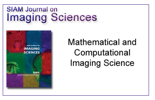
SIAM Journal on Imaging Sciences
metrics 2024
Pioneering Research in Imaging Sciences and Mathematics.
Introduction
SIAM Journal on Imaging Sciences is a prestigious academic journal published by SIAM PUBLICATIONS, focusing on the latest advancements and applications in imaging sciences within the fields of applied and general mathematics. Since its inception in 2008, the journal has established itself as a premier outlet for original research, evidenced by its remarkable standing in the academic community, including a Q1 ranking in both Applied Mathematics and Mathematics (miscellaneous) for 2023. With a Scopus rank of #45 in General Mathematics and an 88th percentile achievement, the journal continues to attract high-quality contributions, making it a vital resource for researchers, professionals, and students eager to stay at the forefront of imaging science developments. Although not currently open access, the journal provides significant visibility through its rigorous peer-review process and commitment to scholarly excellence, ensuring that published works contribute substantially to knowledge in the field. For those looking to delve into innovative imaging techniques or mathematical modeling approaches, the SIAM Journal on Imaging Sciences remains an essential reference point.
Metrics 2024
 0.96
0.96 2.10
2.10 2.50
2.50 82
82Metrics History
Rank 2024
Scopus
IF (Web Of Science)
JCI (Web Of Science)
Quartile History
Similar Journals

IMAGING SCIENCE JOURNAL
Unveiling the Future of Media Technology and VisionImaging Science Journal, published by Taylor & Francis Ltd, serves as a vital resource for researchers and professionals in the fields of computer vision, pattern recognition, and media technology. With an ISSN of 1368-2199 and an E-ISSN of 1743-131X, this journal has been fostering scholarly dialogue since its inception in 1997, with a converged content offering extending through 2024. Its categorization in Quartile 4 in Computer Vision and Pattern Recognition and Quartile 3 in Media Technology highlights its relevance and contributions to emerging trends in these domains. Although it ranks 36th in the Engineering - Media Technology category and 96th in Computer Science - Computer Vision and Pattern Recognition, its innovative research and insights continue to attract the attention of scholars dedicated to advancing knowledge at the intersection of imaging technologies. Offering versatile access options, this journal is essential for students, researchers, and professionals aiming to stay informed and engaged in the rapidly evolving landscape of imaging science.

Eurasian Journal of Mathematical and Computer Applications
Catalyzing Growth in Applied Mathematics and Computer Technologies.Eurasian Journal of Mathematical and Computer Applications, published by the prestigious L N GUMILYOV EURASIAN NATIONAL UNIVERSITY in Kazakhstan, stands as a vital platform for researchers and professionals engaging in the fields of Applied Mathematics, Computational Mathematics, Computer Science Applications, Information Systems, Mathematical Physics, and Modeling and Simulation. With its ISSN 2306-6172 and E-ISSN 2308-9822, this academic journal aims to foster innovative research and facilitate knowledge transfer in these interdisciplinary domains. The journal, which converges its endeavors from 2013 to 2024, is currently ranked Q3 across its various categories in 2023, reflecting its growing influence and commitment to academic excellence. Despite its open access availability, the journal's dedication to quality research is evident as it attracts contributions that not only advance theoretical understanding but also address practical applications. With a supportive community of researchers in an increasingly important field, the Eurasian Journal of Mathematical and Computer Applications is poised to remain a significant resource for those seeking to propel the boundaries of mathematical and computational sciences.
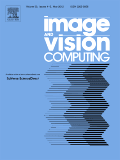
IMAGE AND VISION COMPUTING
Pioneering research at the intersection of vision and computation.Image and Vision Computing, published by Elsevier, serves as a leading international journal focused on the dynamic fields of computer vision, pattern recognition, and signal processing. With its esteemed Q1 category rankings in these areas and an impressive standing in Scopus metrics, where it ranks 19th in Computer Vision and 23rd in Signal Processing, this journal has firmly positioned itself at the forefront of academic research and innovation. Established in 1983, it continues to publish cutting-edge research that drives advancements in technology and applications across various domains. The journal is committed to disseminating high-quality, peer-reviewed articles that address significant challenges and propose novel solutions, making it an essential resource for researchers, practitioners, and students alike. While not an open access journal, Image and Vision Computing offers a wealth of valuable insights into the ever-evolving landscape of visual computing technologies.

VISUAL COMPUTER
Illuminating the Future of Computer GraphicsVISUAL COMPUTER is a prestigious journal published by Springer, focusing on the dynamic fields of computer graphics, computer-aided design, computer vision, and software. Established in 1985, this interdisciplinary journal serves as a vital platform for sharing innovative research, applications, and developments crucial to the advancement of visual computing technologies. With a notable Q2 ranking in various categories, including Computer Graphics and Computer-Aided Design, and Computer Vision and Pattern Recognition, VISUAL COMPUTER demonstrates a solid impact within the academic community, marked by its Scopus rankings that reflect its significant contributions to the field. While the journal does not offer open access, it remains a reliable source of high-quality content for researchers, professionals, and students eager to stay abreast of emerging trends and techniques, ultimately fostering collaboration and knowledge exchange within the rapidly evolving landscape of visual computing.

Proceedings of the Romanian Academy Series A-Mathematics Physics Technical Sciences Information Science
Fostering Global Collaboration in Mathematics and PhysicsProceedings of the Romanian Academy Series A-Mathematics Physics Technical Sciences Information Science, published by EDITURA ACAD ROMANE, is a noteworthy academic journal that serves as a platform for disseminating original research in the intersecting fields of mathematics, physics, engineering, and computer science. With an ISSN of 1454-9069, this journal not only highlights the vibrant academic contributions from Romania but also attracts international submissions, thus fostering global collaboration. Though it currently does not offer an open-access model, the journal remains indexed in significant databases, reflecting its commitment to quality and scholarly rigor. The journal’s impact can be seen through its rankings, including Q4 in Computer Science, Q3 in Engineering, and Q4 across Mathematics and Physics, as well as its Scopus percentile rankings, which indicate meaningful contributions to these domains. With a converged publication span from 2008 to 2024, it aims to catalyze advancements in technical sciences while enriching the academic discourse among researchers, professionals, and students alike. The journal’s headquarters in Bucharest, Romania, positions it as a key player in the Eastern European academic landscape, making it essential reading for those engaged in cutting-edge research.
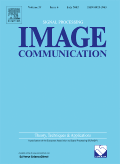
SIGNAL PROCESSING-IMAGE COMMUNICATION
Unveiling the Future of Visual TechnologySIGNAL PROCESSING-IMAGE COMMUNICATION, published by Elsevier, is a leading journal in the fields of Computer Vision, Signal Processing, and Electrical Engineering. With an impressive range of Quartile rankings in 2023, including Q1 in Electrical and Electronic Engineering and Q2 in Signal Processing, this journal is vital for researchers and professionals seeking the latest advancements and comprehensive studies in image communication technologies. Issued in the Netherlands, SIGNAL PROCESSING-IMAGE COMMUNICATION has been an essential resource since its inception in 1989, fostering innovation and collaboration among academia and industry. The journal provides a platform for high-quality peer-reviewed research, addressing significant challenges and solutions in the convergence of image processing and communication. Although currently not an Open Access journal, it offers subscription options that ensure a broad dissemination of groundbreaking knowledge. With a robust reputation reflected in its Scopus ranks, this journal serves as an indispensable reference for students and experts aiming to stay at the forefront of developments in this dynamic field.
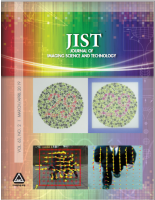
JOURNAL OF IMAGING SCIENCE AND TECHNOLOGY
Exploring the Frontiers of Imaging ScienceJOURNAL OF IMAGING SCIENCE AND TECHNOLOGY, published by I S & T - SOC IMAGING SCIENCE TECHNOLOGY, is a pivotal resource in the realms of imaging science, optics, and materials. With its ISSN 1062-3701 and E-ISSN 1943-3522, this journal has been disseminating influential research since 1993 and continues to be a vital platform for scholars up to 2024. Despite its varied quartile rankings across disciplines—such as Q4 in Atomic and Molecular Physics and Optics, and Q3 in Chemistry (Miscellaneous) and Electronic, Optical and Magnetic Materials—it provides an essential forum for innovative ideas and advancements. The journal’s focus on interdisciplinary connections encourages collaboration among researchers in the fields of chemistry, computer science, and physics. Researchers, professionals, and students interested in exploring the latest imaging technologies and methodologies will find invaluable insights within its pages, making it a significant addition to their academic libraries.
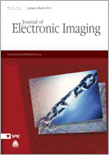
JOURNAL OF ELECTRONIC IMAGING
Shaping Tomorrow’s Discoveries in Imaging and Optics.JOURNAL OF ELECTRONIC IMAGING, published by SPIE - Society of Photo-Optical Instrumentation Engineers, stands at the intersection of cutting-edge research in various fields including Atomic and Molecular Physics, Optics, and Computer Science Applications. With an ISSN of 1017-9909 and an E-ISSN of 1560-229X, this esteemed journal has been a significant contributor to the scientific community since its inception in 1993, continuing its mission to provide a platform for innovative research through 2024. Operating from its headquarters in Bellingham, WA, United States, the journal is currently categorized in the third quartile for major domains such as Electrical and Electronic Engineering, indicating a robust engagement with contemporary topics and advancements. Although it is not an Open Access journal, it remains accessible to a wide audience of researchers, professionals, and students through institutional subscriptions. With its impactful contributions and a comprehensive view of electronic imaging, this journal not only serves as a vital resource but also drives discussions that shape the future of this rapidly evolving field.
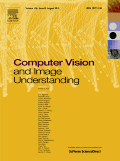
COMPUTER VISION AND IMAGE UNDERSTANDING
Catalyzing Breakthroughs in Visual IntelligenceCOMPUTER VISION AND IMAGE UNDERSTANDING is a leading academic journal published by Academic Press Inc, Elsevier Science, dedicated to the advancement of the fields of computer vision, image understanding, and pattern recognition. Since its inception in 1993, this esteemed publication has garnered a reputation for excellence, achieving a remarkable Q1 ranking in the categories of Computer Vision and Pattern Recognition, Signal Processing, and Software as of 2023. With its robust impact factor and high visibility in the scientific community—ranking #22 out of 106 in Computer Vision and Pattern Recognition and #27 out of 131 in Signal Processing—this journal serves as a vital resource for researchers, professionals, and students looking to explore and contribute to state-of-the-art developments. Although it does not operate under an Open Access model, its rigorous peer-reviewed content ensures quality and relevance in a rapidly evolving technological landscape. The journal’s commitment to fostering innovation makes it an essential tool for anyone engaged in the study and application of computer vision technologies.
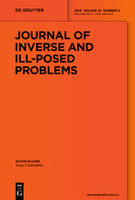
Journal of Inverse and Ill-Posed Problems
Catalyzing Insights in Inverse Problem ResearchThe Journal of Inverse and Ill-Posed Problems, published by Walter de Gruyter GmbH, stands at the forefront of research in applied mathematics, focusing specifically on the theory and applications of inverse and ill-posed problems. With a history dating back to 1993, this peer-reviewed journal has undergone rigorous evaluation, achieving a commendable Q2 ranking in the 2023 Applied Mathematics category, placing it in the top tier of its field. The journal's ISSN is 0928-0219 while its E-ISSN is 1569-3945. It provides a platform for researchers and practitioners to disseminate their findings, explore innovative methodologies, and discuss theoretical advancements, underscoring the importance of these complex problems in various scientific applications. Situated in Germany, the journal is committed to fostering an international dialogue around mathematical modeling and solutions, making it an invaluable resource for researchers, professionals, and students alike. As a vibrant venue for scholarly exchange, it aims to catalyze advancements in this critical area of mathematics, thereby enhancing our understanding of both theoretical and practical dimensions.